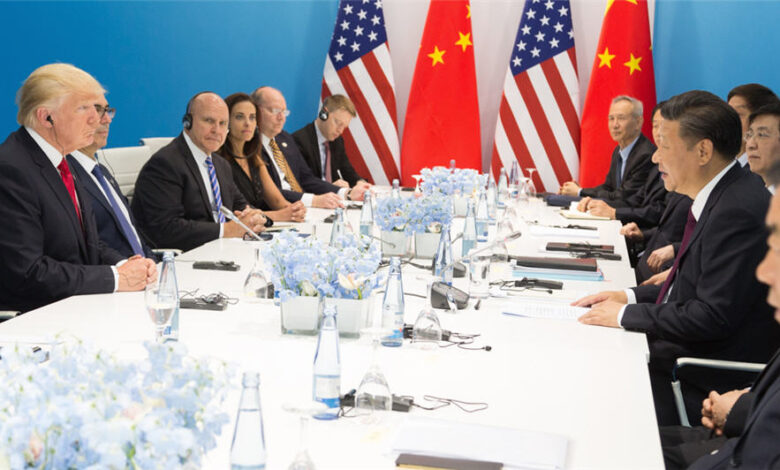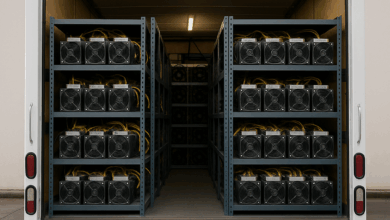Column: Where will Trump and China lead commodities in 2025?

Therefore, forecasting the prices of major commodities such as crude oil, liquefied natural gas, iron ore, coal and metals such as copper will be more difficult than usual in 2025.
For example, consider Trump’s campaign promise: tariffs. The array of tariffs threatened by the president-elect, including up to 60% on China and 20% on all other countries, could hamper global economic growth, force a realignment of trade flows, boost inflation and lead to a tightening of monetary policy.
But it is equally likely that none of this will happen if tariff threats turn out to be little more than negotiating tactics. In this scenario, Trump might forego any harmful policy actions if he believes he has achieved enough “wins” in his dealings with other countries.
For commodities that are more exposed to the global economy, such as copper and iron ore, this means that traders are likely to take a wait-and-see approach. Therefore, price volatility based on daily news headlines may be the norm until the broader political picture becomes clearer.
The lesson of Trump’s first term is that it’s important to focus on what his administration is actually doing rather than on the almost nonstop, often confusing, messaging from the president and his allies on social media.
Trump’s first term has also shown that he typically considers making a deal more important than the actual content of that deal.
Just look at his First round of tariffs Against China. He continues to support them, even though they fail in almost every respect.
It did not reduce the US trade deficit with China, did not spark an industrial renaissance in the United States, did not collect much revenue, and China did not come close to fulfilling its obligations to significantly increase its imports of US crude. Coal and liquefied natural gas.
The Trump team has likely learned from this experience, but if the lesson they learn is that they need to take a tougher stance, the risks of a trade war and accompanying global economic weakness will rise.
Much has been made of the view that China is far less equipped to withstand a trade war with the United States now than it was in 2018, due to the sluggish growth of the world’s second-largest economy.
There is an element of truth in this, but China also has a variety of tools at its disposal to help it successfully navigate a trade war.
It could harm the US economy by disrupting supply chains, selling a massive amount of US Treasury bonds, devaluing its currency, boosting stimulus spending and strengthening its leadership in renewable energy technologies and facilities.
China may also seek to compensate for any loss of access to US markets by promoting trade and investment in Europe and the widely called “Global South.”
Again, it is not at all certain whether these tactics will be used, as much depends on the actual policies the Trump administration will implement once he is sworn in on January 20.
However, it is useful to consider current and potential trends that could emerge in 2025.
Definitions and motivation
First, Trump will almost certainly impose some form of tariffs on imports into the United States.
How big and damaging they will be remains to be determined, but it is probably safe to say that any tariffs would be negative for the global economy and therefore put downward pressure on commodities such as crude oil, iron ore and liquefied natural gas.
Second, the Chinese economy is showing some signs of improvement, with factory activity expanding at the fastest pace in five months in November. If Beijing continues to inject stimulus in a measured manner, the recovery is likely to continue.
This will be positive for iron ore, copper and LNG. It may not be so positive for crude oil, as China’s rapid shift to light-duty vehicle electrification is cutting into gasoline demand, and its shift to liquefied natural gas for trucks is starting to hurt diesel demand.
One trend that is likely to continue is China’s increasing price sensitivity as a buyer of commodities.
This has been evident this year in crude oil, where China’s imports fell by 2.1% on a barrel-per-day basis in the first 11 months, despite strong demand growth forecasts by organizations such as OPEC and the International Energy Agency.
While a weak Chinese economy and increased electrification account for some of this decline, Chinese refiners also cut imports simply because of their view that production cuts by OPEC+ were keeping prices too high.
The big picture for 2025 is that the year starts with a high degree of uncertainty, making it necessary to largely ignore Trump’s rhetoric and focus on the actual policies being implemented and what the data are showing.
(The opinions expressed here are those of the author, Clyde Russell, Reuters columnist.)
(Editing by Anna Czymanski and Sonali Paul)
https://www.mining.com/wp-content/uploads/2018/08/Trump-Xi.jpg




